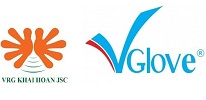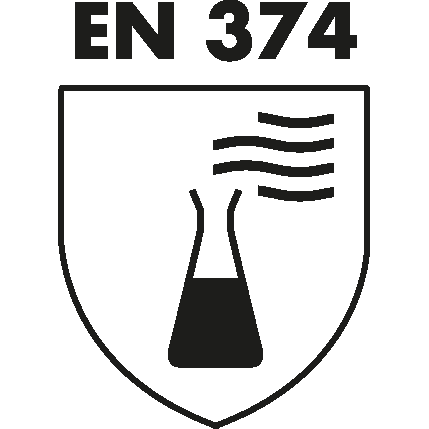Many modern industrial processes involve the use of dangerous and high concentrations of chemicals. This fact, combined with the daily reports of potential health effects from long-term or short-term exposure to chemicals, is the job of minimizing exposure to any chemical. harm to human health.

Figure 1
Working with these hazardous materials requires compliance with strict safety procedures and the use of specially designed protective equipment. The user’s hands must be given special attention, and therefore specialized gloves have been developed to resist exposure to chemicals.
The level of protection against chemicals provided by a particular glove will depend not only on the glove manufacturing design but also on the choice of materials used for glove manufacturing, since the material is suitable. To be effective, each material not only resists the ingress of chemicals due to its structure but also must resist abrasion by chemicals that can resulting in damage such as a crack or a hole.
The European Standard for Chemical Resistant Gloves was first published in 1994 under the name EN 374-1, and subsequently revised in 2003. The current revision of this standard is EN ISO 374. -1: 2016. This standard contains terminology and performance requirements for chemical protective gloves. There are several variations between the 2003 version of EN 374-1 and the current version of the EN ISO 374-1. One of the main changes is that in addition to penetration and osmosis testing, a process test is required on all chemical protective gloves. However, testing of chemical resistant gloves for mechanical properties in accordance with EN 388 has been eliminated. This is now optional for glove manufacturers who want to claim protection from both chemical and mechanical effects in their products.
| Code letter | Chemical | CAS Number | Class |
| A | Methanol | 67-56-1 | Primary alcohol |
| B | Acetone | 67-64-1 | Ketone |
| C | Acetonitrile | 75-05-8 | Nitrile compound |
| D | Dichloromethane | 75-09-2 | Chlorinated hydrocarbon |
| E | Carbon disulphide | 75-15-0 | Sulphur containing organic compound |
| F | Toluene | 108-88-3 | Aromatic hydrocarbon |
| G | Diethylamine | 109-89-7 | Amine |
| H | Tetrahydrofuran | 109-99-9 | Heterocyclic and ether compound |
| I | Ethyl acetate | 141-78-6 | Ester |
| J | n-Heptane | 142-82-5 | Saturated hydrocarbon |
| K | Sodium hydroxide 40% | 1310-73-2 | Inorganic base |
| L | Sulphuric acid 96% | 7664-93-9 | Inorganic mineral acid, oxidising |
| M | Nitric acid 65% | 7697-37-2 | Inorganic mineral acid, oxidising |
| N | Acetic acid 99% | 64-19-7 | Organic acid |
| O | Ammonium hydroxide 25% | 1336-21-6 | Organic base |
| P | Hydrogen peroxide 30% | 7722-84-1 | Peroxide |
| S | Hydrofluoric acid 40% | 7664-39-3 | Inorganic mineral acid |
| T | Formaldehyde 37% | 50-00-0 | Aldehyde |
Table 1
All chemical resistant gloves will not leak when tested according to EN 374-2. Leaks can occur through imperfections in a glove, such as having a very small hole or seam fault. The EN 374-2 test consists of two parts – an air and water leak test:
For air leak tests, the glove is immersed in water and its inside pressurized with air (figure 1). Leaks will be detected by a stream of bubbles from the surface of the glove.
– A similar principle applies to water leak testing. In this assessment, the gloves were filled with water and any leaks were detected by the appearance of water droplets on the outer surface of the glove.
During the test, the amount of test chemical seeped through an inert collection medium is measured until a predetermined osmosis rate is reached. The time for this to happen (known as the ‘breakout time’) is recorded. This determines the material’s performance level. Which chemicals are tested will depend on the end use of the glove and the type of marking product desired by the manufacturer. EN ISO 374-1 lists 18 chemicals, but other chemicals and mixtures may also be tested, depending on the application of the glove.
Three test pieces were taken from the palm of the hand. For gloves longer than 400mm, and where a bracelet is also required for protection, three other test pieces are also taken from the cuff. If the glove contains a seam or seam in the hand zone, it shall also be tested.
Test results are reported based on the standardized breakout time achieved. There are six levels of osmolality (see table 2). The highest level of protection is level 6, which shows a breakout time greater than 480 minutes.
| Performance Level | Time passed before chemical breakthrough (minutes) |
| Level 1 | >10 minutes |
| Level 2 | >30 minutes |
| Level 3 | >60 minutes |
| Level 4 | >120 minutes |
| Level 5 | >240 minutes |
| Level 6 | >480 minutes |
Table 2
Tests performed in accordance with EN 16523-1 replacing EN 374-3. Inside a cell, the surface of the glove material is placed in direct contact with the challenging chemical and the back of the glove material is exposed to the collecting medium. As such, the glove material acts as a barrier separating challenging chemicals from the collection medium. The amount of chemical seeping through the glove material into the resulting vehicle is measured, and from this breakthrough point is calculated.
Wear and tear is the process by which a change to a material occurs – in this case, through contact with a chemical. Signs that degradation has occurred include flaking, wear, a change in appearance, and hardening of the material under test.
Evaluation of the wear and tear of glove material is a new requirement in EN ISO 374-1. Wear and tear should be identified for each chemical required in the instructions for use and on the label. The inspection must be performed in accordance with EN 374-4. If a protective glove is longer than 400mm, and the osmosis test has been performed on both the cuff and the palm, the degradation test should be performed at least for the area where the lowest osmolality is achieved . The principle of the test is that the change in a material’s puncture resistance is measured after continuous contact with an external surface with a test chemical. The force required to push the stylus through the glove material is measured, both before and after exposure to the reagent.

Figure 2
The chemical glove designation (see figure 2) shall be in accordance with EN 420 and the specific requirements are given in EN ISO 374-1. There are three types of chemical protective gloves:
Class A gloves have achieved grade 2 or higher in comparison to the six chemicals listed in EN ISO 374-1 (see table 1). Protective gloves are resistant for at least 30 minutes for each of at least 6 chemicals tested.
– Gloves of class B have reached level 2 or higher compared with at least three chemicals listed in EN ISO 374-1. Protective gloves are resistant for at least 30 minutes for each of at least 3 chemicals tested.
Class C gloves have achieved at least one level 1 relative to one of the chemicals listed in EN ISO 374-1. Protective gloves are resistant for at least 30 minutes for each of at least 1 chemical tested.
For the new classification, experts have agreed that the 3 new class types do not make a difference to the types of products already on the market. Most chemical protective gloves can be assigned to class A; Only thin disposable protective gloves will be assigned to categories B and C. Actual use for users is open to discuss.
VGlove


